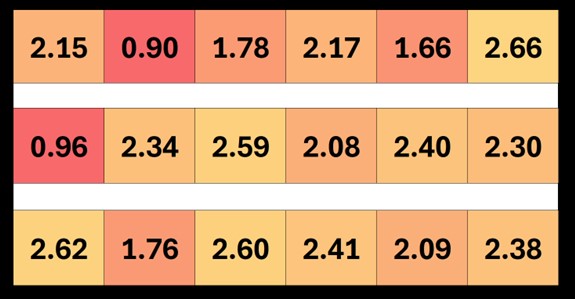
Oven Convection System
Oven Convection System
Developed and optimized a high-performance convection system for a consumer oven, increasing airflow efficiency by 170% through innovative design and iterative testing. As my first project at SharkNinja, while I can’t disclose all details or share specific images, I’m excited to showcase the engineering insights and learnings from this experience.
Project Overview:
• System Development: Led the development and testing of a convection system for a new oven, meeting executive-defined performance goals
• Modifications: Researched, designed, and implemented changes to optimize airspeed distribution within the oven cavity
• Performance Improvement: Increased overall airspeed by 170%
System Design & Development:
• Component Selection: Selected and integrated a new motor and fan combination to enhance convection performance
• Custom Fabrication: Designed and fabricated a custom radial shield and fan shroud to optimize airflow distribution across the cavity
• System Modification: Modified an existing oven unit, disassembling and reassembling components to accommodate new design improvements


Initial Protype for custom fan shroud
Testing and Data Collection:
• Iterative Testing: Developed and executed a testing plan using candlestick anemometers to capture precise airspeed readings throughout the cavity
• Sensor Arrays: Designed and implemented sensor arrays to monitor airflow in different regions, systematically collecting data to assess modifications
• Flow Visualization: Conducted visual airflow tests using foam balls to track directional flow patterns, complementing anemometer data that provided airflow magnitude
Visual Airflow Test Using Foam Balls to Track Directional Flow Patterns in the Oven Cavity
Data Analysis:
• Airspeed Mapping: Collected airspeed data from 18 anemometers to create a detailed airflow map of the oven cavity
• Dead Spot Identification: Analyzed the data to identify low-flow "dead spots" and areas of inefficient airflow distribution
• Data-Driven Modifications: Used the airflow map to guide design adjustments, iterating on physical changes to optimize airspeed and reduce dead spots

Average Cavity Air Speeds (m/s) Before Modifications, Highlighting Inefficient Airflow and Dead Spots

170% Improvement in Cavity Air Speeds After Modifications, Optimizing Airflow Distribution
Collaboration & Communication:
• Global Collaboration: Worked with teams in the US, UK, and China to ensure alignment on project goals, testing procedures, and deadlines
• Management Updates: Provided weekly progress updates to upper management, clearly presenting technical findings and next steps
• Design Documentation: Documented final design modifications in a detailed report for accurate implementation into the next prototype build
Project Reflection:
This was my first major project during my internship at SharkNinja. While I’m unable to disclose all project details or share specific images, I wanted to highlight the engineering and learning involved. It’s exciting to know that in the near future, a mass-produced consumer product will be on the market, and I played a significant role in its performance and quality.